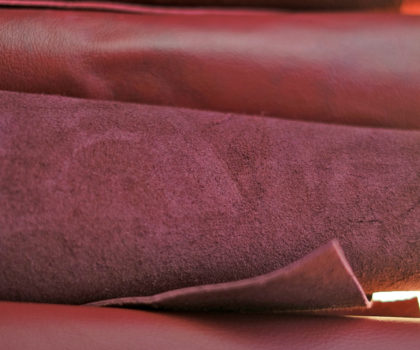Wearing your wine

By Mary Malik
We all drink and even cook with wine, but have you heard of wearing it?
Through experimentation wineries find uses for the grape skins, pulp, seeds and stems left over after the winemaking process. Some press the grape skins and make a second wine while others use the leftovers, called pomace, as a compost to fertilize the vines or as fodder for farm animals.
“Recently, there has been a development in Italy to produce grape leather or wine leather made from the leftovers of the winemaking process,” says Jim Sperk of the Northern Ohio Wine Guild. “Animal leather is waning in popularity due to environmental issues, animal cruelty concerns and workers’ exposure to harmful toxic chemicals in the tanning process. As an added benefit, wine leather is sustainable and can be recycled.”
Wine leather is said to look and feel like actual leather and the process uses very little water—and that water is recyclable. Wine leather is currently being used in bags and shoes and there are further plans for the material to be used in upholstery and automobile interiors.
“Wine leather is 100% vegan; no animals are harmed during the process and no animal products are used,” says Jim.
Production of wine leather starts by extracting bio-oil from grape seeds and drying the rest of the grape materials which then get polymerized, or combined, together. The resulting product is then coded onto organic cotton fabric, forming a soft, textured, plant-based wine leather.
“It’s too early to tell if wine leather will play a major role in the fashion industry, but its production would extend the purpose of grapes, potentially closing the loop on the winemaking process,” says Jim. “Soon we could be not just drinking but wearing our wine.”
For information on the Northern Ohio Wine Guild, contact Jim Sperk at tinymoonwines@usa.net.
